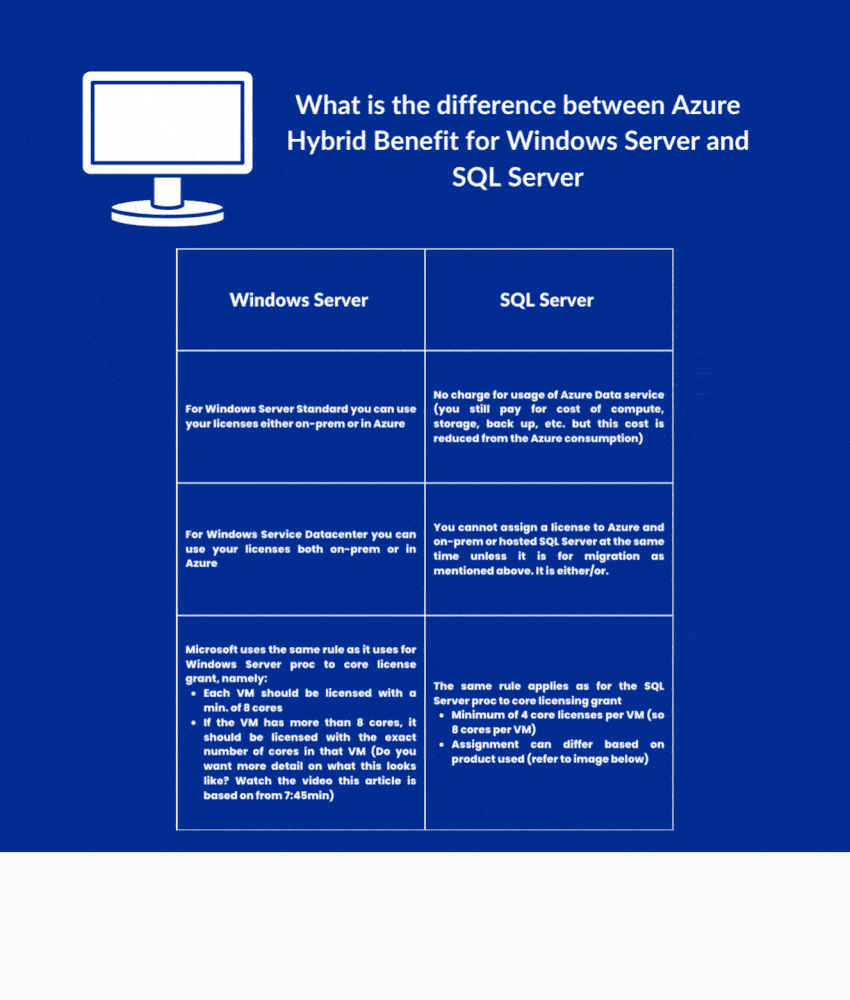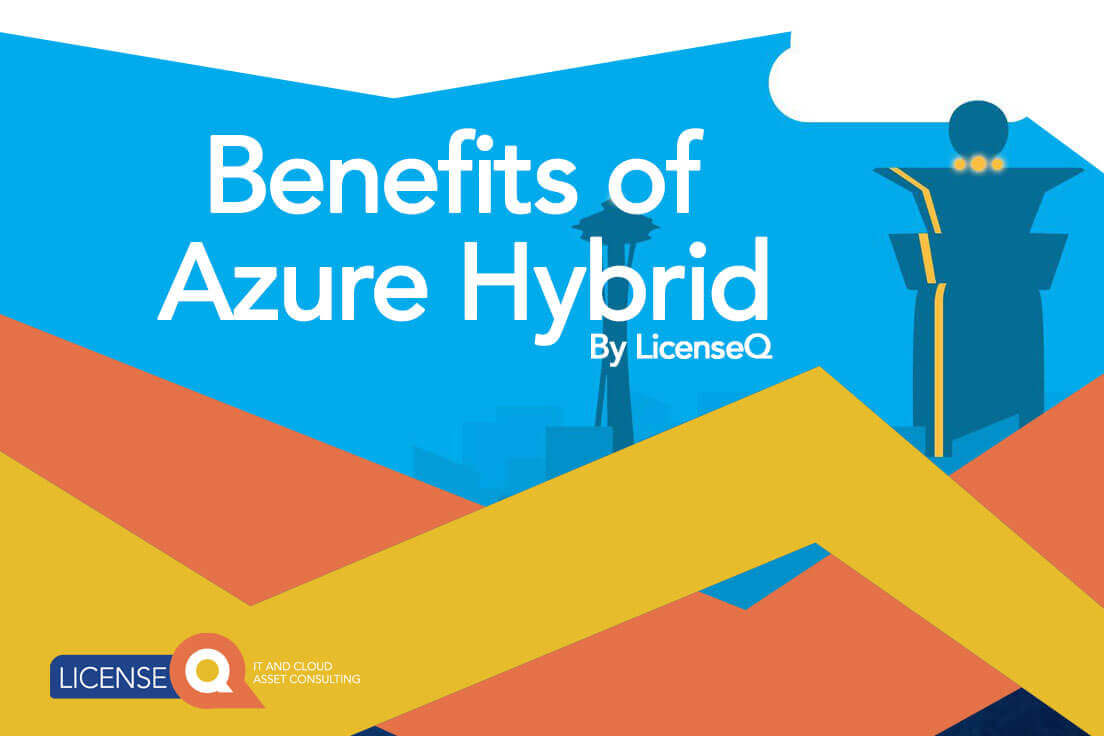A guide to Azure Hybrid Benefit
What is Azure Hybrid Benefit?
The Azure Hybrid Benefit allows customers to use their on-premises Windows Server licenses with active Software Assurance to pay a reduced rate for virtual machines in Azure. So you need to have licenses with Software Assurance!
This benefit also applies to customers who have purchased Windows Server through the Microsoft Cloud Agreement.
Microsoft Azure Hybrid Benefit is a good option for most organizations. Many organizations move to the cloud to cut costs and to improve scalability and security. However, you’ll need to have strong internal software asset management processes to benefit fully from the cloud.
Why Azure Hybrid Benefit?
Azure Hybrid Benefit will be of interest to any company that uses a lot of Azure! When Azure Hybrid Benefit is set up correctly, it will reduce your costs in the cloud and will lower your Azure spend as you will only pay for the “bare metal” costs and not the Microsoft software charges.
By making it easier and more affordable to move workloads, Azure enables customers to take advantage of the many benefits that cloud computing can offer, such as increased agility, scalability, and security.
It helps maximize the value of existing on-premises Windows Server and/or SQL Server license investments when migrating to Azure. Eligible customers can save up to 40% on Azure Virtual Machines (IaaS) and up to 55% on Azure SQL databases (PaaS). If combined with Azure Reserved Instances they claim savings of up to 80%!
These numbers might not always work out to their full potential, but Azure Hybrid Benefit will definitely save you money. Keep reading to find out how and why!
How does Azure Hybrid Benefit work?
The Azure Hybrid Benefit allows you to use your on-premises Windows Server licenses to pay for Azure Virtual Machines. It can save you up to 40% on your Azure VM costs.
The Benefit is available for both Standard and Data centre editions of Windows Server.
To use the Azure Hybrid Benefit, you must have Software Assurance coverage for your Windows Server licenses. When you create an Azure VM, you can select the “Use Hybrid Benefit” option. This will apply the discount to your VM cost.
How do I get started with Azure Hybrid Benefit?
In order to get started with the Azure Hybrid Benefit, you will need to have an active Azure subscription. Once you have registered for an account, you can then start using your on-premises Windows Server licenses to pay for Azure VMs at the reduced rate.

Azure Hybrid Benefit explained by LicenseQ
- Use the entitlements (procuring licenses, renewing Software Assurance, etc.) you have built up over time when moving to the cloud and/or Azure
- Reduce your spend on Azure Services by leveraging past investments
- Available for Windows Server and SQL Server core licenses – both Standard and Datacenter (for Win Server) or Standard and Enterprise (for SQL) with Software Assurance can be leveraged
- Easy set up so you can start saving right away
- Receive free Extended Security Updates (ESU) when moving your environment to the cloud
Pro tip! Strange but true!
“Procuring new licenses for on-premises SQL Server or Windows Server (so L+SA or Subscription licenses) can still reduce your costs within Azure! Also, if you have the option to license your entire Windows Server and/or SQL Server estate in a Server and Cloud Enrolment the price of your licenses will drop significantly”
— Floris Klaver, Co-Owner LicenseQ
How does it work for Windows Server and SQL Server?
There are some differences between the way Azure Hybrid Benefit works for Windows Server and SQL Server.
The migration time is the same for both, namely up to 180 days, and with both products migration back to on-prem is possible, with a required minimum 90 days assignment.
What are the differences?

Our advice to you as a Microsoft customer
- Switch to Azure Hybrid Benefit as fast as possible! You might need to invest more upfront, as you pay for your licenses for an entire year in advance. However, in the long run it will reduce your spend!
- Know your licences! Know what you have and how you can leverage it in the cloud. Invest time in figuring out how many licenses you have, run the MAP toolkit or use your own SAM tooling
- Use the basic rules in the Product Terms to calculate how many VMs and databases you can cover with your current license entitlements and check these against your organization’s roadmap.
- Do a deep dive on procuring new licenses! It might be advantageous to procure new licenses in your EA or as CSP subscriptions instead of paying for full service in Azure.
- Always on machines – Azure Hybrid Benefit makes the most sense for machines that are on 24/7 or long periods of the year (>9 months is usually the threshold) as you pay Software Assurance in annual instalments. Combine these always-on machines with Azure Reserved Instance.
We hope this article has been helpful! Want to know more about Azure Hybrid Benefit and how it can help your organization? Visit our Azure Optimization page or reach out to our licensing experts at info@licenseq.com.










